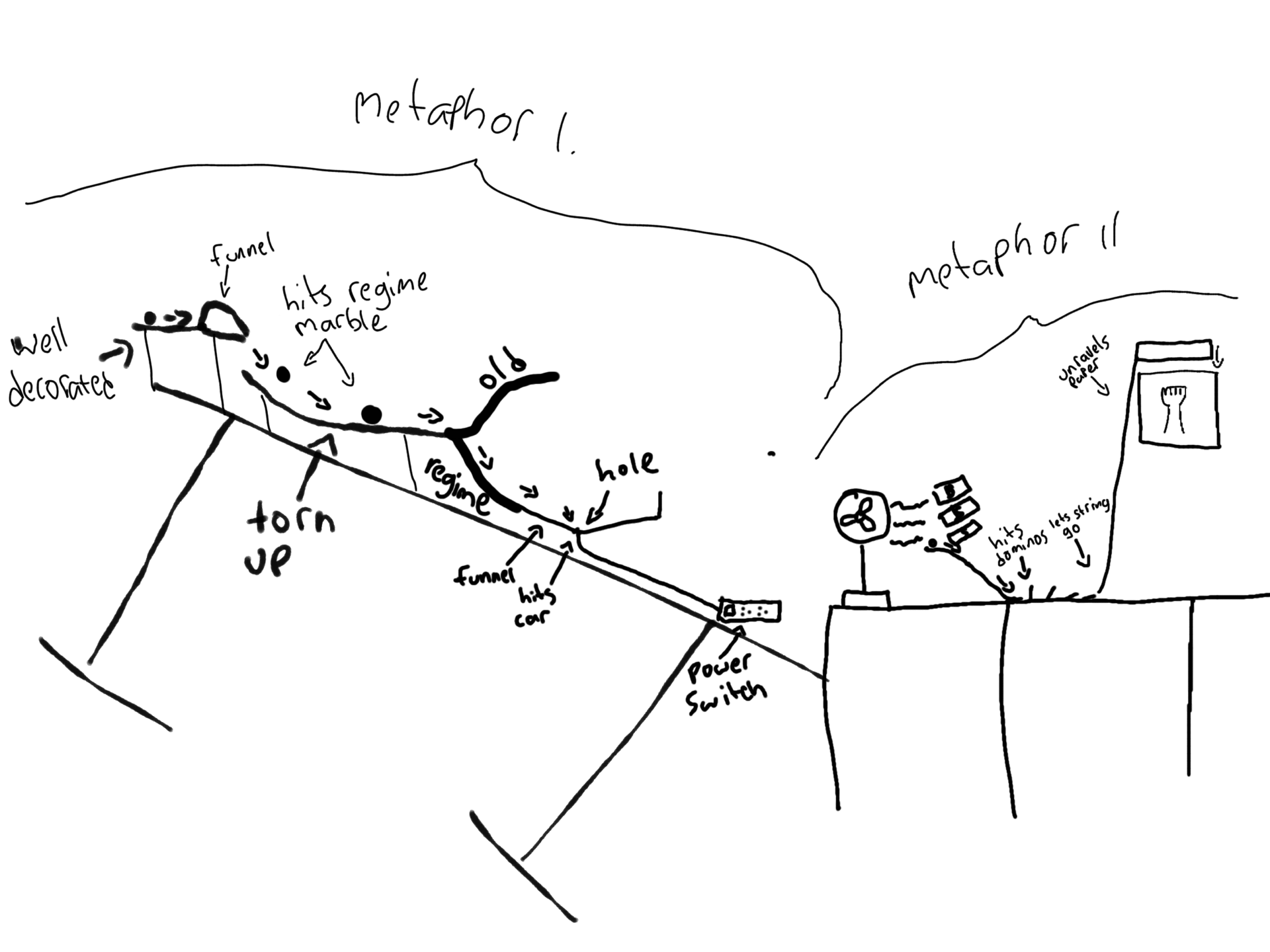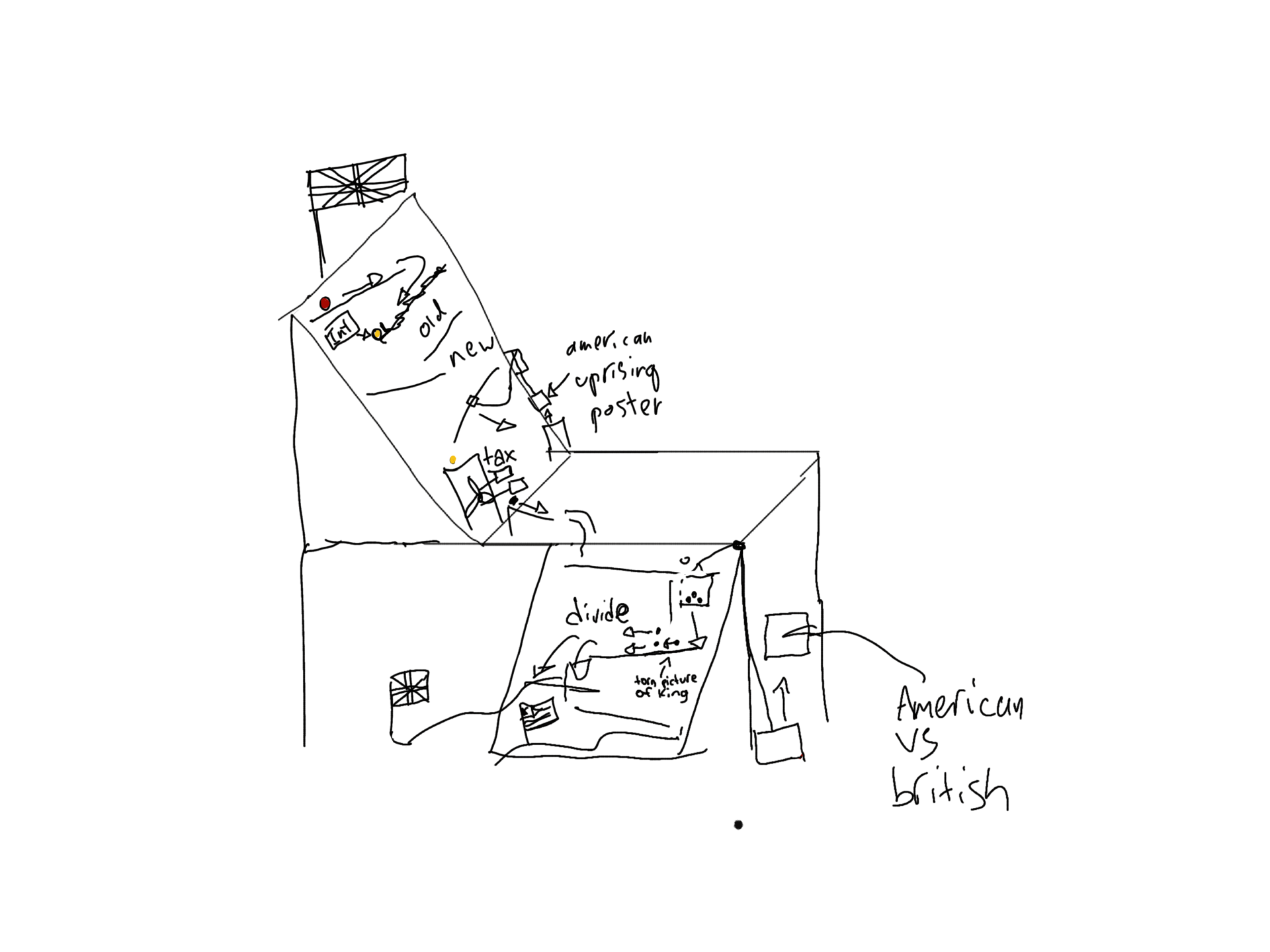Now you might think this is just like any ordinary blog post, but it’s actually something new to me called an informative blog post. This is basically a post that we do mid-way through the project to get the readers up to speed on whats happening and to reflect on what we’ve done so far to get a better understanding of what we’ve learnt so we can go further in the next milestones.
So the latest project we’ve been working on in PLP is called Storm The Barricades. It’s all about the American Revolution and film. Just like the last project; Running A Remake we have very little time to work and complete the project. It’s only been one week so far and we’re already half way through! The driving question for this project was “how do revolutions transform societies”.
The first thing we started learning about was Crane Brinton and more specifically, his theory of revolution. Crane had a very interesting and distinctive outlook on revolutions. He viewed a revolution as though it was a disease and such, it had symptoms and treatment. He said that a revolution had four phases, and each phase has different sets of symptoms. It starts off as incubation. The old order, or old government had upset the middle class (ms) as the ms thought the old order was corrupt. This leads into phase 2, where the symptoms are economic crisis, political weakness and intellectual opposition which means they spoke out against the government. The government is broken down by the ms and intellectuals and start a new one lead by the moderates. The symptoms for phase 3 are pretty much complete chaos and carnage because the radicals are not happy with the new government so they decide to act out, taking control of the moderates government, making it their own. Finally the fourth phase. Recovery. When the radicals calm down, their government still reigns but is returned to quieter times. This phase is a bit confusing though because a new form of radicals could be unhappy with the new government and the whole cycle could restart; but if it doesn’t then it’s a slow and unpredictable path to recovery.
Now that we knew the basis of Crane Brintons theory, we moved onto milestone 1 where we built a Rube Goldberg machine.
Here’s an example:
At first I was kind of confused about this but my group of Nate, Jordan and Simon helped me understand that we had to build the machine to express Crane’s theory using metaphors. We had everything planned out and even had a drawing showing what the machine would look like, but our first draft didn’t go so well. A combination of factors including time, difficulty and workload meant the machine was a disaster. We chose a very hard design in 3D while most of the groups went for a 2D model. Also, we only had two people actually building the machine, Simon and I, While the Nate and Jordan made the storyboard and story mountain. One of the main problems of the machine was reliability. We just couldn’t get the darn thing to work the majority of the time. On top of the machine, we also had to film and edit a high grade video telling a story about the revolution metaphors in our machine. Below is our model, and the video.
Our next try went unbelievably well. We decided to scrap the entire idea we had the previous day and go with an all new design. Jordan and I made another drawn model. We were hopeful for this new design, but we knew it wouldn’t be easy. A complete recreation plus filming and editing. We were in for a long day. We also switched roles for maximum efficiency. Jordan and Simon would build while Nate and I created the story board, script, voiceovers and film. By the end of the day we had completed it, filmed it and had the voiceovers. All that was left over was to edit, which I took on. Overall this machine was much more reliable and told more of a story. We owe much of this to a sheet which we wrote our goals in and timestamps of what we had gotten done throughout the day. We can’t thank our teacher enough for making us do this as it really worked. The drawing and the video are below.
So far this project has been great and even though I don’t understand the revolution side of it completely yet, I’m sure it will come in time for the end of the project.
See ya in the next half of this post 👋




Leave a Reply